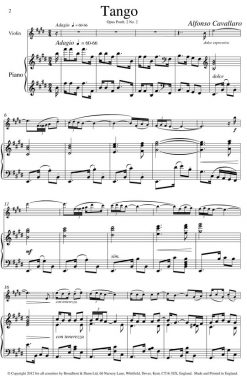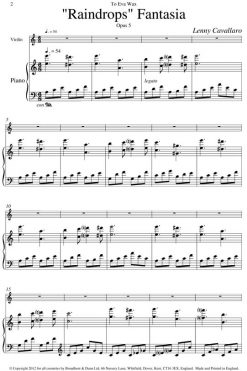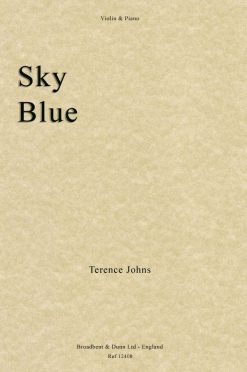£6.95
Piece Description
Additional information
| Media | |
|---|---|
| Composer | |
| Instrumentation | |
| Difficulty | |
| Series |
Biography
Biography
Cavallaro, Alfonso
Alfonso Cavallaro (1909–1990) was born in Scaffati, Italy, and emigrated to the United States in late 1920. He graduated from the Yale School of Music in 1928, capturing the Lucy Bell Woodward Prize in harmony, the Isadore Troostwyck Memorial Prize in violin performance, and the Louis Felsburg Memorial Scholarship. He also appeared twice as soloist with the New Haven Symphony Orchestra. In 1935 he went abroad, studying composition with Ottorino Respighi and conducting with Bernardo Molinari at the Conservatorio di Santa Cecilia, and later violin with Carl Flesch and Jules Boucherit. He enjoyed a very successful concert tour before returning to the U.S.A. After earning an M.A. from Columbia, Cavallaro held faculty positions at several secondary schools and colleges. He always felt the highlight of his academic career occurred when he conducted Gian Carlo Menotti's opera The Medium at Converse College in Spartanburg, SC, and garnered mention in the New York Times. Respighi’s unexpected death (April 1936) appeared to have deflected Cavallaro away from composition at least to some extent. Respighi was reportedly most impressed by his student’s orchestral work, Scherzo-Tarantella, and String Quartet, both of which received awards. The Scherzo-Tarantella has, in fact, been paired with Pines of Rome by orchestras in both the U.S.A. and Italy. Although the Respighi influence is obvious in the compositions from the 1930s, Cavallaro was also adept at other styles. His mastery of contrapuntal writing is most apparent in two organ works, the Chorale Prelude (Wer nur den lieben Gott lässt walten) and Fugue in F Minor, a Fugue on B-A-C-H for string quartet, and a Canon for Violin, Viola and Piano. He also wrote a set of short violin pieces in the style of Fritz Kriesler, a number of songs, and other pieces for various instruments. An obscure yet noteworthy 20th century composer, Alfonso Cavallaro left a number of splendid new works waiting to be discovered. See http://lennycavallaromusic.com/Alfonso.html

Related products
Violin & Piano
Lenny Cavallaro – “Raindrops” Fantasia for Violin and Piano, Opus 5 – Digital Download
Violin & Piano
Terence Johns – Sky Blue (Violin & Piano) – Digital Download
Violin & Piano
Violin & Piano
Violin & Piano
Paul Lewis – A Somerset Garland (Flute, Violin or Harmonica & Piano) – Digital Download
Arrangements of Somerset folk songs to give them a new lease of life and introduce them to audiences who might never otherwise hear them. Very popular with audiences, its individual movements are useful as fillers or encores. Martock Jig and Langport March are also playable on Piccolo. It is a very direct and enjoyable work and is also versatile, with versions for flute, violin or harmonica with piano accompaniment. The original harmonica version is very idiomatically written by the composer, who was long associated with the late great virtuoso Tommy Reilly. It is folk material very well suited to the instrument. For teaching studios, conservatories, libraries, amateurs and professionals. The last movement of this work Langport March was a Trinity College London Grade 5 Exam Piece for Flute between 2007 and 2022.
 John Marson - Two Idylls (Violin & Piano) - Digital Download
John Marson - Two Idylls (Violin & Piano) - Digital Download  Lenny Cavallaro - Sonata No. 1 in D Minor for Violin and Piano (or Harpsichord) Opus 4 - Digital Download
Lenny Cavallaro - Sonata No. 1 in D Minor for Violin and Piano (or Harpsichord) Opus 4 - Digital Download 






